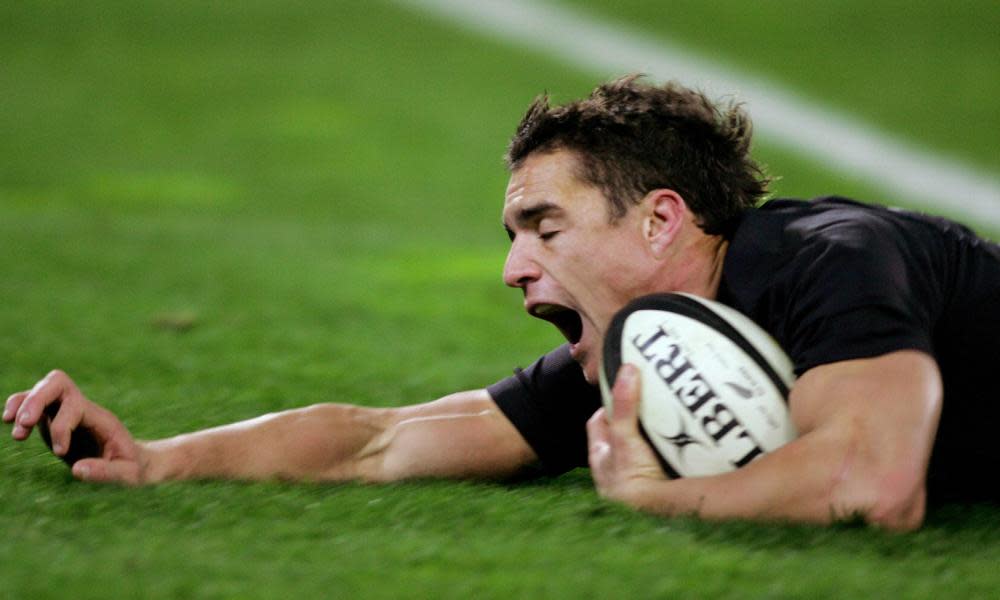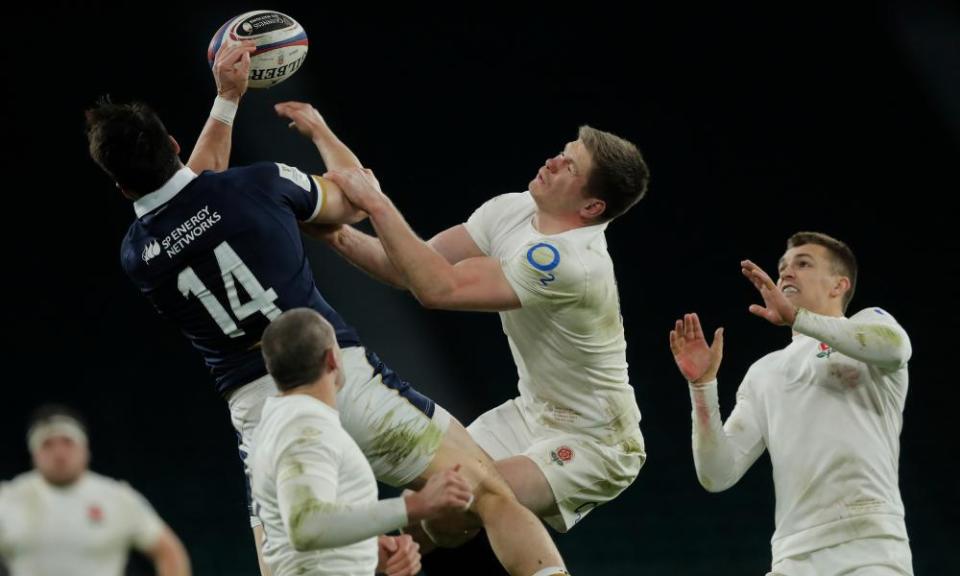Dan Carter's brilliance set impossibly high standard for modern fly-halves

News of Dan Carter’s retirement sends me back to that match, the second Test against the British and Irish Lions at Wellington in 2005, the greatest he ever played. Watching it back now, it’s surprising to be reminded how well that maligned Lions side played. Their captain, Gareth Thomas, was rarely better, Dwayne Peel rarely more threatening, Steve Thompson and Simon Easterby were utterly rampant with the ball and Paul O’Connell and Lewis Moody were likewise without it. The Lions would have gone 10-0 up after five minutes if Jonny Wilkinson hadn’t missed a penalty kick. In the end, Carter played so well none of it made the blindest bit of difference.
Carter was only playing his sixth game at fly-half for the All Blacks, an early peak in a career as long as his. It makes me think of Joseph Heller’s reply when an interviewer told him that he’d never written anything else as good as Catch-22. “Who has?”
Related: Dan Carter hangs up his boots as a study in sporting greatness | Michael Aylwin
It wasn’t just that Carter scored two tries, made a third, and was a couple of inches away from a fourth and fifth, or that he kicked four conversions and five penalties. It was that he made his tackles and broke theirs, with his bumps and steps and fends – the Lions missed 18 between them, six of which were on him. He ran them ragged with his long, pinpoint kicks deep into their territory, and time and again sent them scurrying back the way they came chasing after his cunning little grubbers. He pulled the strings in the midfield with quick, intricate little loops and passes, and split open the Lions’ defence with a string of improbable offloads.
He finished up scoring 33 points, while the tourists only managed 40 between them in all three Tests they played on tour. It was one of the great solo performances, “absolutely majestic” as said Ian McGeechan afterwards, so good it settled all arguments. As a fan shouted at Alastair Campbell, moonlighting as the Lions’ head of press relations, after the match: “Spin that, you prick.”
Carter passed like a scrum-half, hit like a flanker; sprinted, stepped and finished like a winger in attack; caught, kicked and tackled like a full-back in defence. You get fly-halves who kick, fly-halves who run, fly-halves who pass, you get some who kick goals, some who score tries, some who set them up, some who start attacks and some who end them. Carter did all of it. The great fly-halves are all good in different ways, Carter was good in every way. It is why he is the best of the modern era, why nobody really disagreed he should be in the team or tried to argue that his tackling was too weak, or his kicking game too wayward, or his playmaking too dull-witted.

It’s an impossible standard, but still seems to be the one we use to judge all the other players in that position. Listen to the low rumbling of all those long-running grumbles about the two men who have shared the fly-half job for England these last six years: George Ford, often criticised because people think he’s a defensive liability, and Owen Farrell, picked apart for his lack of spontaneity in attack, his bad tackling technique and his habit of kicking away possession. Fly-halves are odd that way – they have so much influence over the shape of the game and the style of play that everyone who loves rugby has their own ideas about what they’re doing wrong, when and whether they ought to kick, pass or run.
The only way to please everyone is if they’re able to do pretty much everything, like Carter did. After a few minutes listening to some of the advice thrown at them from the foghorn voices at the back of the grandstands at Twickenham, you begin to feel a little more sympathy for Farrell and Ford’s zero-tolerance approach to outside opinions, even if it makes them unforgiving interviewees. One of the most viewed videos of Farrell on YouTube is a lowlights reel of all the moments he’d rather forget. You get the impression that outside of a small circle of trusted judges, the only judgment Farrell cares about is his own.
Right now he agrees with everyone else that he’s not playing too well, that, by his own standards, he was particularly poor in the last game he played at fly-half, England’s defeat by Scotland earlier this month. He admitted he was “massively disappointed” with his own performance. But that shouldn’t obscure how much he brings to this England team. He’s still a talismanic figure, the epitome of that hard, hungry, demanding team spirit Eddie Jones has been building in them ever since he took over. Ford, of course – Farrell’s mate, deputy and sidekick – isn’t dissimilar. The two of them will go down as two of the greatest England ever had in the position, but it’s still not enough to stop the nitpicking about all the things they could be better at.
It’s not just an English phenomenon – you can see it in the debates about whether Finn Russell’s game-management skills are up to snuff, or Wales’s attacking game would be sharper if they dropped Dan Biggar. Fly-half begins to feel like an impossible job. Unless you’re Carter, that is. It goes to show how spectacularly good he was.

 Yahoo News
Yahoo News 
